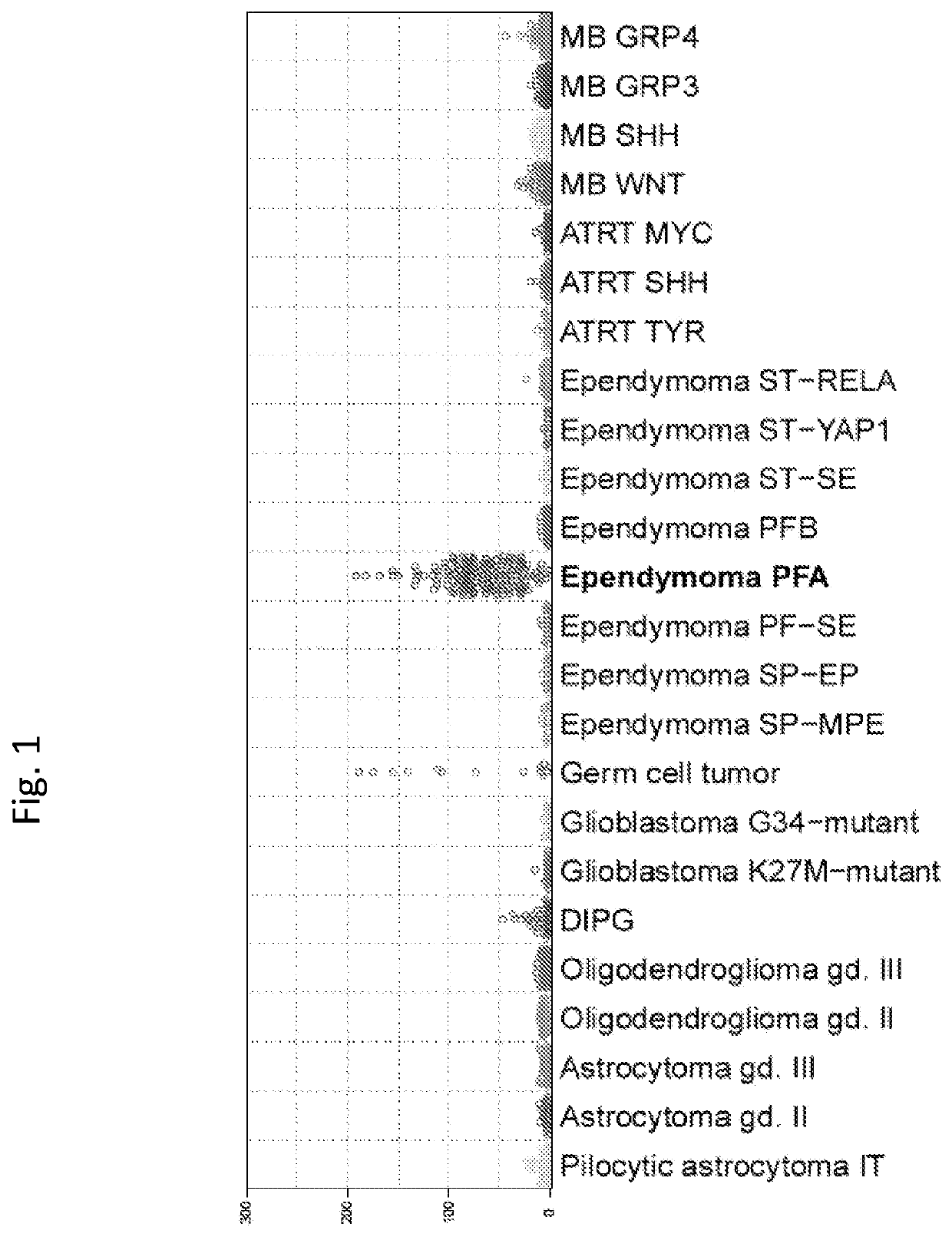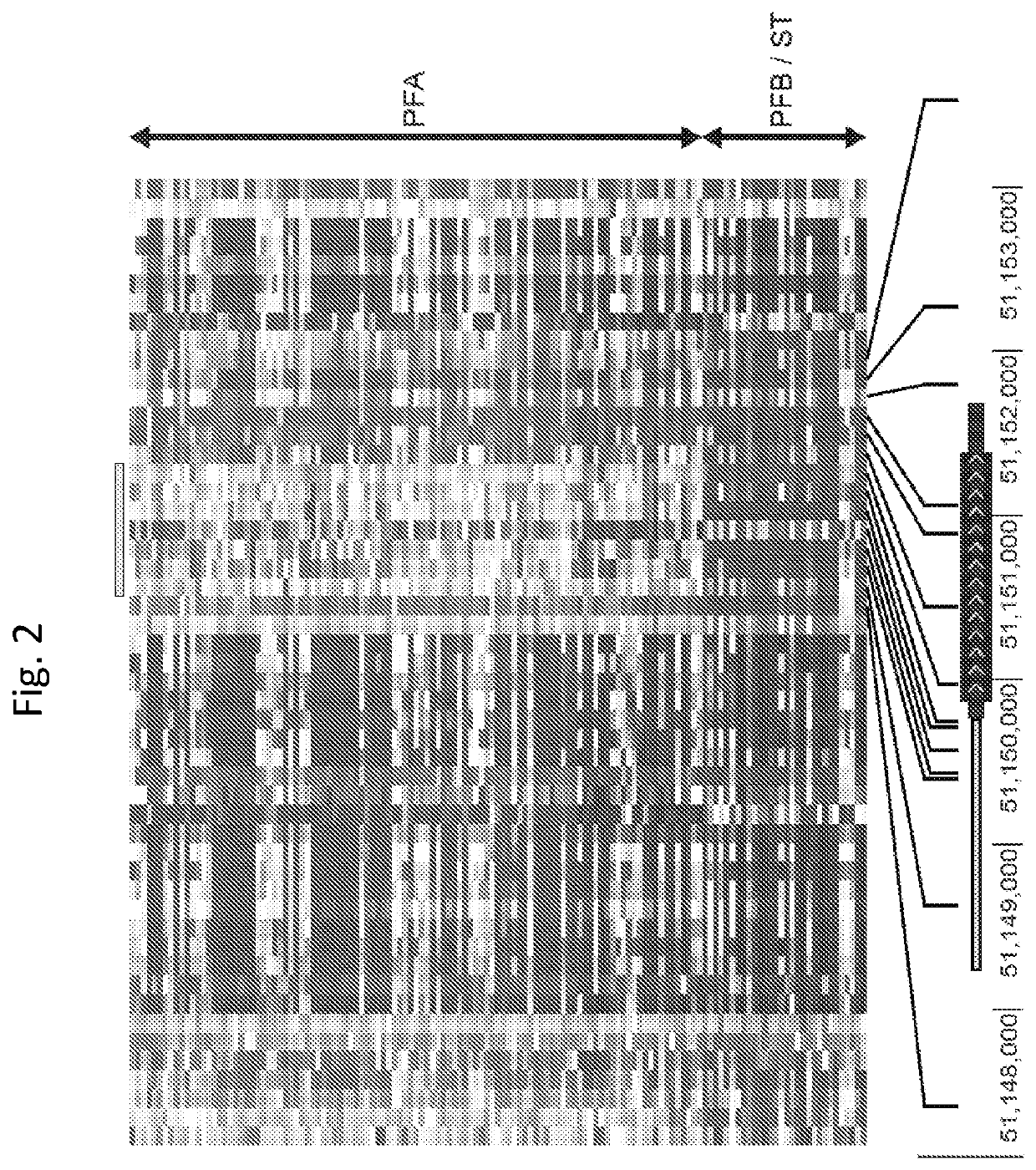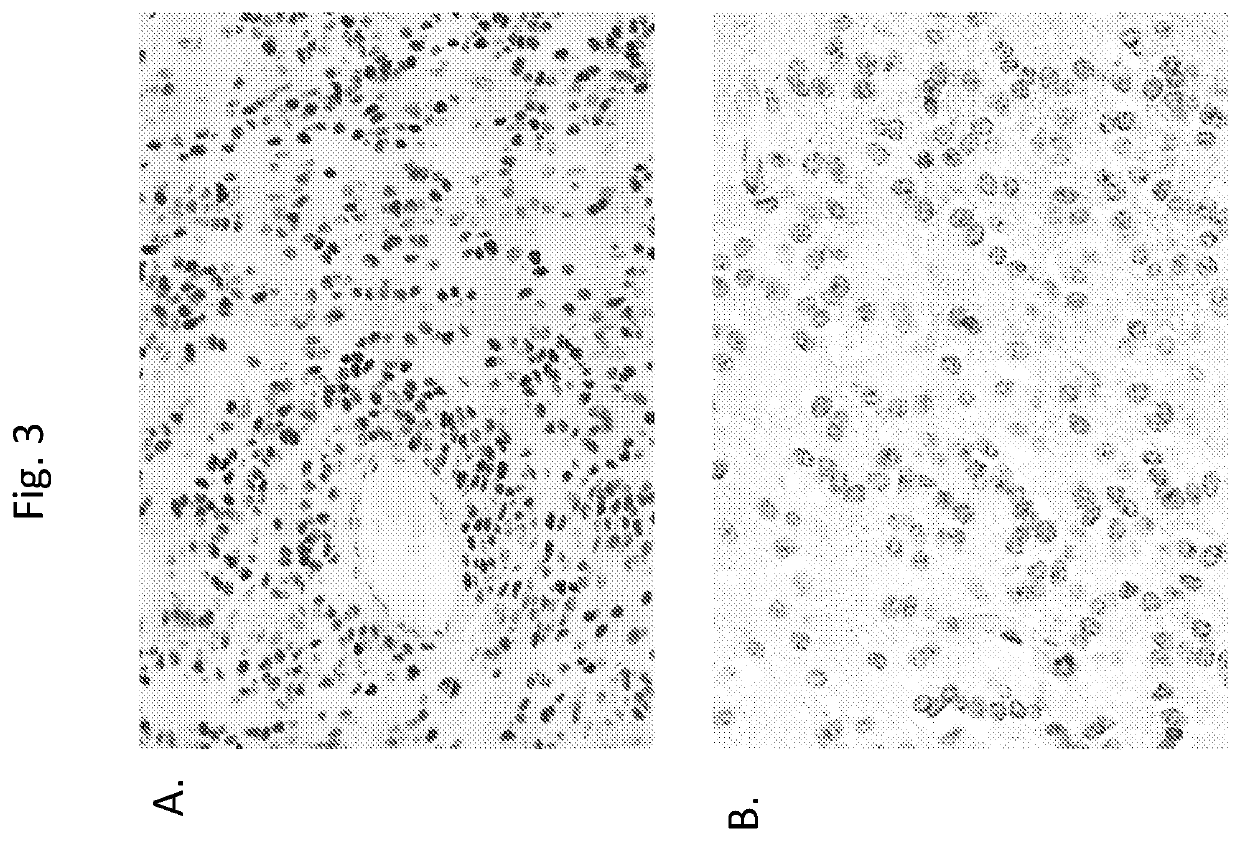EPIGENETIC HISTONE REGULATION MEDIATED BY CXorf67
a histone regulation and epigenetic technology, applied in the field of cell biology, can solve the problems of limited clinical utility of this classification, and achieve the effect of increasing the expression of cxorf67 and decreasing the activity of prc2
- Summary
- Abstract
- Description
- Claims
- Application Information
AI Technical Summary
Benefits of technology
Problems solved by technology
Method used
Image
Examples
example 1
ymomas—Recurrent Histone H3 Mutations
[0135]We discovered H3 K27M mutations in 13 tumors at a frequency of 4.2%. HIST1H3B (n=5) and HIST1H3C (n=6) were mutated more frequently than H3F3A (n=2). H3 K27M mutations (9 / 13; 69%) were enriched in PFA-1f, nine mutant tumors representing 39% of tested ependymomas in this minor subgroup. The remaining four tumors occurred at lower frequencies in two other PFA-1 subgroups, PFA-1a (6.4%) and PFA-le (2.5%). Both H3F3A:p.K27M mutations were detected in PFA-1a tumors.
[0136]In diffuse midline gliomas, H3 K27M mutations produce widespread reduction of lysine 27 trimethylation (H3 K27me3). Immunohistochemical analysis of a subset of 135 SJ ependymomas showed that this is also true for H3 K27M-mutant PFA ependymomas, but that wild-type PFA ependymomas also display a global loss of H3 K27me3 immunoreactivity, confirming recent results reporting a global loss of H3 K27me3 in PFA ependymomas (Bayliss et al., 2016). The number of H3 mutation-positive case...
example 2
ymomas—Overexpression and Recurrent Mutations in CXorf67
[0137]Initial whole genome sequencing studies of ependymoma reported no recurrent SNVs, SVs, or indels in PF tumors (Mack et al., 2014; Parker et al., 2014). Following the discovery of recurrent H3 K27M mutations in our series of ependymomas, we reviewed these original datasets for alterations that could be explored further, finding recurrent mutations in a putative gene, CXorf67, at Xp11.22 on the X chromosome (5 of 30 PF ependymomas; 17. Subsequent targeted sequencing of a subset of PFA tumors (n=234) disclosed a CXorf67 SNV in 22 tumors, at a frequency of 9.4%. CXorf67 missense mutations were found in seven of nine minor subgroups at the following frequencies: PFA-1a 10.3%, PFA-1b 18.8%, PFA-1c 4.2%, PFA-1d 6.3%, PFA-le 9.7%, PFA-2a 6.8%, and PFA-2b 12.5%. CXorf67 and H3 K27M mutations were mutually exclusive, and no ependymoma with a CXorf67 mutation also harbored 1q gain. CXorf67 has one exon, and 15 of 22 mutations (68%) ...
example 3
nce of Recurrent CXorf67 Mutations Across Distinct Molecular Subgroups of Posterior Fossa Type a (PFA) Ependymoma
[0140]DNA methylation profiling previously revealed nine molecular groups, three in each major anatomic compartment (Pajtler et al., 2015). Of those in the posterior fossa (PFA, PFB, and PF-SE), PFA and PFB have been established in several studies as the two principal groups, each with distinct clinicopathologic and biologic associations. PFA ependymomas generally arise in young children and, with a poor outcome, present a major therapeutic challenge. Despite the clinical need, molecular analyses of PFA ependymomas have so far generated few therapeutic leads, and these tumors are essentially treated as they were two decades ago.
[0141]The present study aimed to discover molecular heterogeneity of potential clinical and biological relevance among PFA ependymomas. Using DNA methylation profiling, we analyzed a large series of 675 tumors and found two major and nine minor sub...
PUM
| Property | Measurement | Unit |
|---|---|---|
| weight loss | aaaaa | aaaaa |
| survival time | aaaaa | aaaaa |
| size | aaaaa | aaaaa |
Abstract
Description
Claims
Application Information
 Login to View More
Login to View More - R&D Engineer
- R&D Manager
- IP Professional
- Industry Leading Data Capabilities
- Powerful AI technology
- Patent DNA Extraction
Browse by: Latest US Patents, China's latest patents, Technical Efficacy Thesaurus, Application Domain, Technology Topic, Popular Technical Reports.
© 2024 PatSnap. All rights reserved.Legal|Privacy policy|Modern Slavery Act Transparency Statement|Sitemap|About US| Contact US: help@patsnap.com










